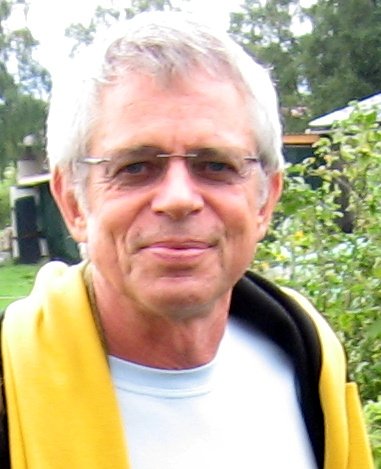FIRST MALARIA THEN AIDS THEN CANCER NOW CORONA
A HELP FOR SELF-HELP
Dr. Hans-Martin Hirt and Team
Anamed InternationalTable of Contents
- Introducing "Anamedopathy"
- Introducing A-3
- A-3 and Malaria
- A-3 and AIDS
- A-3 and Cancer
- A-3 and Cancer: How it works
- A-3 and Corona
- Summary
1. Introducing Anamedopathy
ANAMED = ACTION FOR NATURAL MEDICINE is a combination of the advantages of modern medicine and traditional herbal medicine.
Natural Medicine Offers:
- Scientific basis
- Reliable preparation methods
- Excellent packaging
- Clear documentation
- Exact dosages
- Specific "use by" dates
Additional Benefits:
- Uses locally available resources
- Grounded in local language and culture
- Available even in remote regions
- Promotes self-reliance
- Cost-effective
- Sustainable
2. Introducing A-3 (Artemisia annua anamed)
A-3 is a special breed of Artemisia annua (not genetically modified) that has been specifically cultivated for its medicinal properties. It can be grown in both large plantations and small medicinal gardens.
3. A-3 and Malaria
Key Fact:
Every day, 3,000 people die from malaria. Artemisinin, the active compound in A-3, works by increasing immunity and releasing oxygen radicals that kill malaria parasites.
4. A-3 and AIDS
Artemisinin is patented as an antiretroviral drug. AIDS patients often suffer from Kaposi's Sarcoma, a form of cancer that can be positively affected by substances that stimulate the immune system, such as artemisinin.
5. A-3 and Cancer
Tumor cells share two critical characteristics that make them vulnerable to A-3 therapy:
- Iron Accumulation: Tumor cells accumulate excess iron, similar to malaria parasites.
- Immune System Vulnerability: Like HIV, cancer cells can be fought by a strong immune system.
Both artemisinin and A-3 tea destroy cells with high iron concentrations through oxygen radicals and strengthen the immune system.
6. How A-3 Works Against Cancer
A-3 contains at least 20 known anti-tumor substances, including:
- Alpha-Amyrin
- Apigenin
- Artemisinin
- Chrysosplenol-D
- Caryophyllene-oxide
- Kaempferol
- Luteolin
- Oleanolic-acid
- Quercetin
- Scopoletin
Key Mechanisms:
- Direct Cell Toxicity: Targets and destroys tumor cells through oxygen radicals.
- Angiogenesis Prevention: Restricts blood vessel growth to tumors.
- Immune System Stimulation: Enhances natural killer cell activity.
- Radiation Sensitivity: Increases tumor cell sensitivity to radiation therapy.
- Metastasis Prevention: Reduces tumor cell adhesion and spread.
7. A-3 and COVID-19
A-3 shows promise in COVID-19 management through multiple mechanisms:
As Prophylaxis:
- Contains antiviral ingredients that may inactivate the virus
- Boosts immunity through natural killer cells
- Strengthens and protects the respiratory tract with essential oils
As Therapy:
- May prevent viral spread to the lungs
- Enhances immune response
- Inactivates the virus through antiviral compounds
- May help prevent cytokine storm
Dosage Recommendations:
Prophylaxis: 0.25g A-3 per 10kg body weight once daily (tea or powder)
Acute Treatment: 1g A-3 per 10kg body weight daily, divided into 2-3 doses
Long COVID: 0.25-1g per 10kg body weight daily, depending on severity
8. Summary
A-3 represents a powerful example of how traditional medicine, when combined with scientific understanding, can address multiple health challenges from malaria to cancer and viral infections like COVID-19. Its multi-faceted approach, low cost, and accessibility make it particularly valuable in resource-limited settings.
Important Note:
This information is for educational purposes only and is not intended as medical advice. Always consult with a healthcare professional before starting any treatment.
Acknowledgements
This presentation has been compiled from the work of several co-workers:
- Florian Freyer – University of Tübingen
- Dr. Sudowe – Ganzimmun Institute, Mainz
- Nicolé Krützen – Queen Margaret University, Edinburgh
- Prof. Dr. Max Moser – Medical University of Graz
- Worldwide employees of anamed international e.V.
